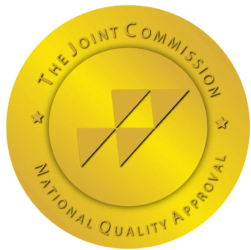In May of 2018, the U.S. Food and Drug Administration approved a new drug proven to mitigate the symptoms associated with opioid withdrawal in adults. It’s not the first medication that can ease withdrawal symptoms, but it is special in another way. It’s the first one of these drugs that is not itself an opioid.
Although the existing addiction medications are effective, they still have the potential for abuse because they are opioids. The risk is lesser, but it’s still there. Methadone, for example, can prevent withdrawal symptoms by producing similar effects to the opioids that are being abused. When taken properly, it’s slow acting and doesn’t cause any intoxicating effects. When it’s misused – for example, crushed up and snorted or mixed into a drink – the effects come on quickly and cause a high. Some people say that methadone and similar drugs are merely a crutch, or worse, that addicts are just exchanging one addiction for another. People can stay on methadone for years.
This new medication is called Lucemyra (lofexidine hydrochloride), and it’s not a treatment for opioid use disorder itself. It’s meant to allow people to stop using opioids quickly, without either a long tapering off period or a period of severe withdrawal symptoms. The withdrawal symptoms won’t disappear completely, but they will be less severe. Lucemyra is only meant to be used for 14 days as part of a more extensive long-term treatment program. It’s taken as a tablet four times a day to begin with and then slowly reduced.
The active ingredients in Lucemyra bind to cell receptors that decrease the production of norepinephrine. Norepinephrine is a chemical that acts as both a stress hormone and a neurotransmitter (meaning it sends signals between nerve cells). When your brain perceives a stressful or dangerous event, norepinephrine is released into the blood, increasing alertness, heart rate, and blood flow to muscles. This is part of the body’s fight or flight response, regulated by the autonomic nervous system.
Researchers believe that the autonomic nervous system plays an important role in the development of opioid withdrawal symptoms like nausea, anxiety, agitation, increased heart rate, severe aches and pains, and sleeping problems. In its clinical trials, Lucama was shown to lessen the severity of those symptoms.
FDA officials say that Lucemyra should be used for people with severe addictions. People who are trying to wean themselves off of opioids that they’re taking to manage pain should stick with a slow tapering of the medications. For people who are severely addicted to opioids, the new drug could allow them to stop using completely, without switching to a different opioid and taking the risk of becoming addicted to it instead.
If you or a loved one need help with quitting drugs or alcohol, consider Asana Recovery. We offer medical detox, along with both residential and outpatient programs, and you’ll be supervised by a highly trained staff of medical professionals, counselors, and therapists. Call us any time at (949) 438-4504 to get started.





